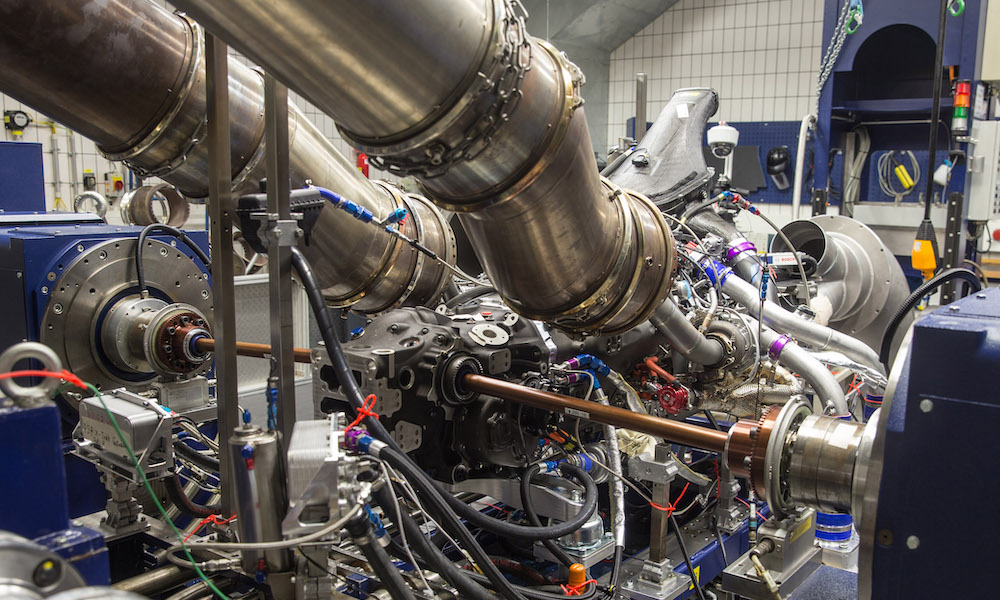
Photo: BMW
BMW Motorsport’s lead drivetrain engineer says the manufacturer is pushing to improve the already “quite promising” reliability for its LMDh engine as it moves into the on-track testing phase of its development.
The BMW M Hybrid V8 looks set to begin testing in Europe later this month, before it moves to the U.S. to prepare for the car’s racing debut at the Rolex 24 at Daytona.
The engine, a four-liter twin-turbocharged V8 based on the engine BMW used in DTM in 2017 and 2018, has already undergone dyno testing.
Over the last few weeks, the engine with designation P66/3 has been installed into the car at chassis constructor Dallara’s base of operations in Varano.
Ulrich Schulz, BMW Motorsport’s chief drivetrain engineer, told Sportscar365 that the reliability after initial dyno testing looked promising, but that BMW is pushing to make further improvements against a tight development schedule.
“Right now we are checking reliability, which looks quite promising from our existing point of view, but not yet finished,” Schulz told Sportscar365.
“Power efficiency development and application and so on… There is still a long way to go. There’s not much time, but I hope we will do it.”
Schulz noted that the original P66/1 engine was extensively modified to transform it from the front-engined layout and make it ready for use in the LMDh monocoque.
Part of the long list of modifications included a new clutch and clutch actuator to compensate for the change in layout, while also integrating a high voltage system to allow the spec hybrid system to be implemented.
Schulz admitted that time constraints have been challenging for the program, especially as BMW works to identify and address any potential issues within the engine.
“Everything should work from the beginning, which is usually a zero failure program, which usually in my experience will not happen,” said Schulz.
“Because something happens every time. There are some things which are new inside. The complete turbo system, the injection system.
“We did a lot of calculations right now that the complete engine is rigid enough to survive in the car.
“Because you can imagine we have the engine now in between the chassis and the gearbox. All chassis loads have to be transferred by the engine.
“So I can twist the engine, somehow, I can [break] the crankshaft, if I’m not that lucky.
“That’s what we investigated, that is what we calculated. We have a lot of experience with that, especially from the days of Formula One, but it is something that we have to check on the track.”
Of note, Schulz confirmed that BMW has also been experiencing anomalies with the LMDh spec Bosch MGU.
Porsche was reported to have encountered complications with the unit during an endurance test at Motorland Aragon, with an updated version of the MGU set to be validated this week in a multi-day group test at Sebring International Raceway.
“We are getting the experience that Porsche did before, because they are running for a longer time right now,” Schulz said.
“Yes, it’s challenging. Let’s say it’s like that. There are different specs existing of the MGU and of the software as well and Bosch is constantly developing this point as well.”
It was previously believed that reliability concerns have only occurred during on-track testing and not when paired to internal combustion engines on the dyno.
Schulz contradicted that by stating that anomalies have appeared during its dyno testing.
“Up to now, we are running on the dyno with it and yes we see some things on the MGU as well,” he said. “But at least we are in good contact with Bosch and so we are quite confident that we can overcome all that.”






















